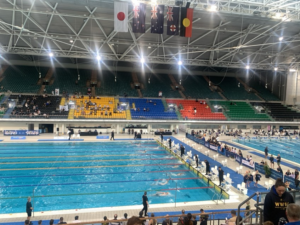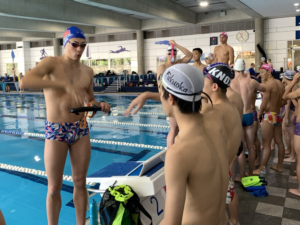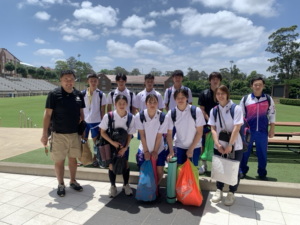The city of Kitakyushu is an international city with one million people, bordering the northern region of Kyushu Island by the Kanmon Strait. It was established in February 1963 by the amalgamation of the five cities of Moji, Kokura, Wakamatsu, Yahata and Tobata.
Kitakyushu has thrived as a gateway to Asia thanks to its convenient location between Tokyo and Shanghai and as an industrial base in Japan.
Mojiko Retro Town – Streets from the time of the first Western influence –
Since its opening in 1889, Mojiko Port has kept its role as a gateway to the rest of the world. This has meant that the port is full of beautiful western-style buildings, such as JR Mojiko Station.
The green and white building (left) is a wooden structure in the Neo-Renaissance style, where you can find old facilities dating back to before the Second World War. Mojiko Station is the only station in Japan to be designated as an important cultural property by the Japanese government. From the station, you can go along the street lined with historic Western-style buildings and enjoy the atmosphere of Japan from a century ago.
See Mojiko Retro in a New Light – The Mojiko Retro Night Fantasy –
After sunset, the streets of Mojiko Retro are filled with colourful illumination until 9pm on weekdays and 10pm on weekends. You can have a romantic walk among the illuminated buildings or look over the entire town from the Mojiko Retro Observation Room.
Castle Town Kokura – Castle town of swordsmen –
Kokura Castle was built in 1602 by Tadaoki Hosokawa, famous for its beautiful Chinese style main tower. What we see today is the main castle tower, rebuilt in 1959, open to the public as a historic theme park. There are many interesting exhibitions, including a “diorama of castle town with 1,500 paper dolls” and “seven mysteries of the life of a feudal lord”. Come have a taste of 400 years of history in Nukagura – there is even a pickle specialty store within the castle.
Kokura Castle Japanese Garden
How about a cup of green tea in the lord’s house in front of the castle? At the Kokura Castle Japanese Garden, you can learn about Ogasawara and other schools of etiquette in Japan. The building within the garden is of Shoin-zukuri type, a traditional style of domestic architecture. In the tokonoma (alcove), you can see seasonal paintings or calligraphy to take you back to the time of the warlords.
Invented in Mojiko Port – Baked curry –
There are many stories surrounding the origin of this dish. The most plausible one is that in the late 1950’s a café in the Mojiko Port started to serve curry with cheese on top in gratin style. The perfect combination of curry, cheese, and a lightly baked egg makes it one of the most popular menu items at the Port of Moji.
Invented in Kokura – Udon noodle stir-fry –
Udon noodle stir-fry (yakiudon) was first invented in post-war Kokura, when people started to use udon instead of soba noodles. It’s famous for its thick, sticky noodles and the spicy taste of its sauce. You can find yakiudon at many restaurants in the nearby arcade.

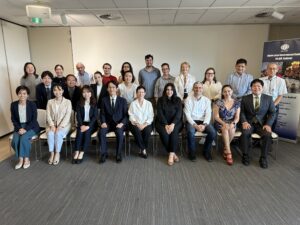
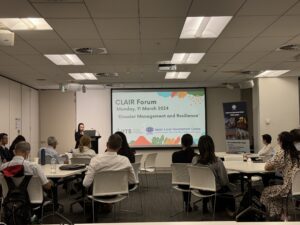
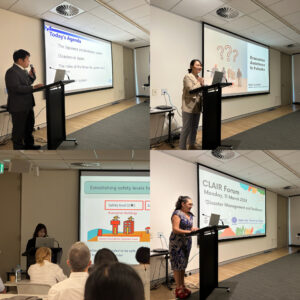
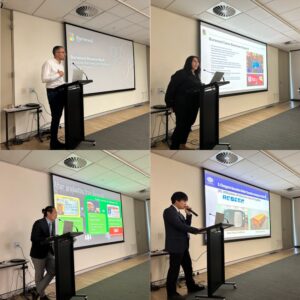
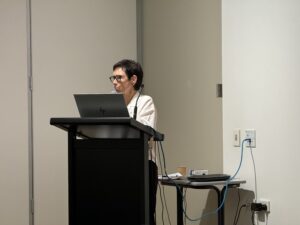
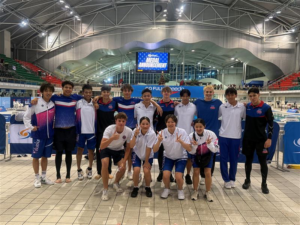 From the 3rd to the 13th of December, eight selected swimmers from the Fukuoka Swimming Association visited NSW, where they participated in joint training sessions with a local school and competed in the 2024-25 Speedo NSW Senior State Age Championships.
From the 3rd to the 13th of December, eight selected swimmers from the Fukuoka Swimming Association visited NSW, where they participated in joint training sessions with a local school and competed in the 2024-25 Speedo NSW Senior State Age Championships.